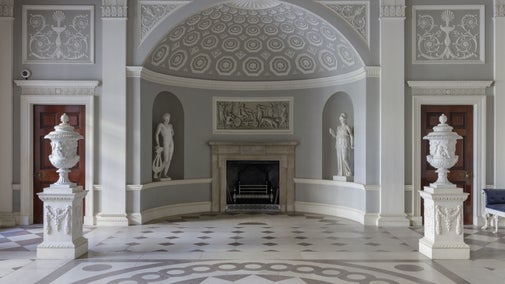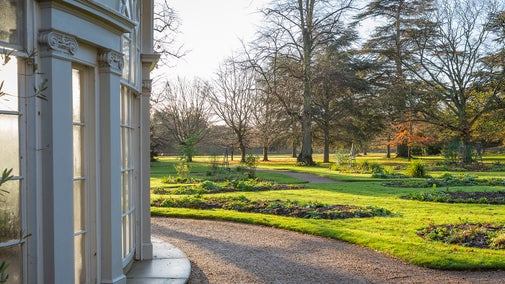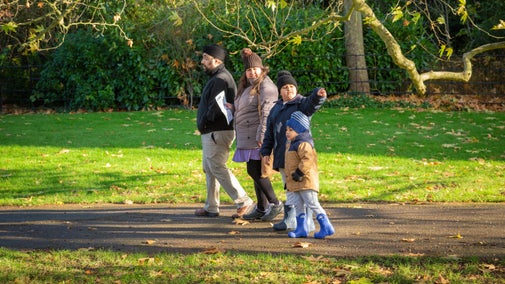
Discover more at Osterley Park and House
Find out when Osterley Park and House is open, how to get here, the things to see and do and more.

From humble Tudor beginnings, the house at Osterley Park was transformed by architect Robert Adam for the Child family during the late 18th century, turning it into a fashionable party house fit for entertaining banking clients, friends and family.
The neo-classical mansion at Osterley Park was originally a Tudor house built in the 1570s by Sir Thomas Gresham. The house was later acquired by wealthy banker Sir Francis Child in 1713.
Other owners of Osterley include William Waller, commander of the Parliamentarian armies and later Nicholas If-Jesus-Christ-Had-Not-Died-For-Thee-Thou-Hadst-Been-Damned Barbon, who died in debt to the Child bank through whom he had mortgaged Osterley.
Sir Francis Child and his sons were at the forefront of modern banking, during what was known as the ‘financial revolution’ of the late 17th century. They were major investors in the new stock markets and founded their own family banking business on Fleet Street, competing with the newly formed Bank of England.
It was a high-risk business but one which brought the Child family huge success. It allowed them to acquire the grand Osterley Park in West London as part of a defaulted mortgage and indulge in their passion for collecting works of art from around the world.
Sir Francis’s grandson, also called Francis, employed young Scottish architect Robert Adam in 1761 to remodel and transform Osterley into the grand mansion you see today; Horace Walpole once described it as the ‘palace of palaces.’
During this time Adam was making a name for himself in fashionable society in London, designing the homes of the rich and famous. He worked on Osterley Park for nearly 20 years between 1760 and 1778, transforming and styling the house, taking inspiration from his travels around Europe and the classical world.
Osterley continued to be known as a party house into the 1930s and hosted many glitzy celebrity parties during this time. Country Life and other magazines published glossy articles listing Hollywood celebrities among the guests.
Osterley’s history with film and television goes back to the 1930s – An Alligator Named Daisy was shot here – right through to the modern day with The Dark Knight Rises, Vanity Fair and The Crown being filmed on site.

Find out when Osterley Park and House is open, how to get here, the things to see and do and more.
Discover what to see in the house at Osterley Park. Explore the grand rooms designed by architect Robert Adam for the Child family and find out about life above and below stairs.

Discover what to see in the garden at Osterley Park and House. With year-round colour, explore the Tudor walled garden, 18th-century flower beds and take in views across the estate.

Explore the parkland and estate at Osterley Park and House. Discover what to see and do in the wider estate, from picnics by the lake to bird spotting.

From bike rides to den building, discover the full range of family-friendly activities and events taking place at Osterley Park.

In the past few years we’ve undertaken a fair amount of work on improving the paths at Osterley Park and House, and on restoring the original views.

Learn about people from the past, discover remarkable works of art and brush up on your knowledge of architecture and gardens.

Explore the objects and works of art we care for at Osterley Park on the National Trust Collections website.
